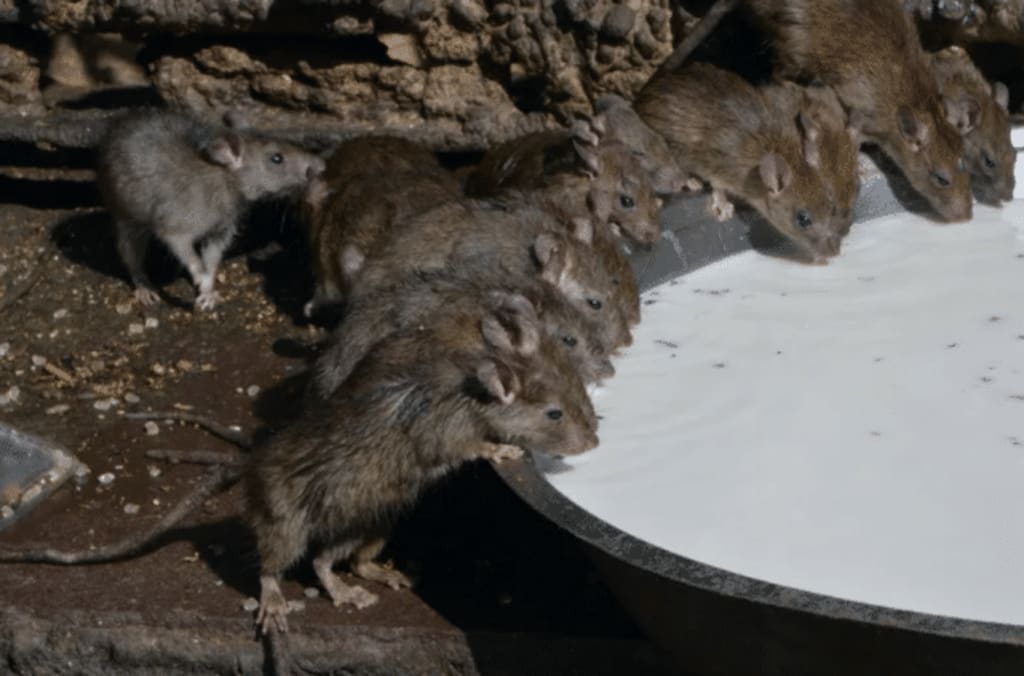In the past, people could not get enough to eat, and there were rats everywhere to steal food. Now that there is more food, why are there fewer rats?
Reasons for fewer mice

In the past, productivity was low, and people often ran out of food, but at that time, every household in rural areas "raised" a few big mice. These mice jumped up and down in the house, disappeared, and ate food as if it were their own home. .
I remember my biggest worry when I was a child was getting my ears gnawed off by a mouse when I fell asleep, because I often heard about such things happening at that time.
However, with the development of the country in recent years, our living standards have improved, and food waste has become more and more common, but it seems that mice have become less and less common, and they do not come out to steal food. .
One of the most widely distributed mammals on earth
A total of 56 species of mice have now been described in the world, and they are distributed in all continents except Antarctica. Among them, there are mainly 5 species of mice in China, namely, the brown house mouse, the mouse, the yellow-breasted mouse, the yellow-haired mouse and the black house mouse.
There are not many animals in the world with such a wide range as the mouse, and the mouse may be the only existing wild mammal to do so.
In fact, the area inhabited by rats is even wider than that of humans, and traces of rats can be found on some uninhabited islands.
If human beings rely on their own wisdom to migrate to various continents step by step, then a large part of rats rely on humans. They are one of the few wild animals that are highly adapted to human communities. Basically, wherever humans go, they will hide in our Follow us where in the various tools.
Different mice will be slightly different in appearance, but also in abilities.
For example, the black house mouse, which is a species suitable for climbing, likes to move on the beams and walls of the former wooden houses, so it is also known as the roof rat.
Another example is the brown house mouse, which is the most widely distributed mouse species in the world. Their most famous ability is their super diving skills. They can hold their breath underwater for at least 3 minutes, and swim out until they catch small fish and shrimp. water surface.
Although the outstanding abilities of different species of mice will vary, the differences in their survivability are not particularly large. Most species of mice are able to hunt underwater, move quickly on land, and climb to avoid pursuit and Dig a hole to make a home.
In addition, most mice also have some characteristics that are specially adapted to humans. For example, most mice have poor eyesight, which is because they are nocturnal animals, which can stagger the activity time with us.
In exchange for losing sight, they have an excellent sense of hearing and smell, and in human communities, they can quickly forage for food, as well as sense danger and flee the scene quickly.
These abilities are the main reason why we hate them but can't get hold of them, and mice have been following us like a nightmare for hundreds of thousands of years.
Are there really fewer mice?
Except for laboratory mice and pet hamsters, it is estimated that few people like mice, and most people have a complex for getting rid of mice.
However, I want to state here that the number of rats in the world is definitely not decreasing. On the contrary, their number is still increasing steadily every year.
A statistic shows that rodents account for 40%-50% of all mammals, and mice are the largest contributors. At present, there are at least 20 billion mice wandering in the world, of which only the number of brown mice Basically the same as humans.
With the invention of various rodent-killing tools and chemicals, the number of mice has not decreased but increased. Part of it is due to human factors, but the most important thing is themselves. As a species, mice are definitely powerful.
Mice are opportunistic omnivores, they can adapt to all eating habits. When there are many crops, they can basically only eat grains. When these carbohydrate foods are not available, they can be good predators, preying on insects and mollusks. , as well as small fish and shrimp in the water, in addition to which they can be excellent scavengers.
Due to the improvement of human productivity, the food available for mice has actually increased, and their spirit of not being picky eaters will naturally promote the development of the population.
On the other hand is the super reproductive ability of mice. I don't know if you have been exposed to math problems like "rat arithmetic", it can well reflect the super reproductive ability of mice.
The life of a mouse is very short, and some small mice even have a lifespan of a few months, but in the short life of a mouse, they will not waste a minute except for the lactation period, either giving birth to a child or giving birth to a child.
Mice are basically animals that breed in all seasons. Generally speaking, their gestation period is very short, maybe only ten or twenty days.
The interesting thing is that most species of female mice will quickly enter estrus within 10-24 hours after giving birth to a litter. As long as the pairing is successful after this, they can enter the gestation period while breastfeeding, with almost no time wasted. .
Moreover, mice can also give birth to many young mice per litter. At present, it has been observed that a litter of 20 mice is born. The time of sexual maturity of small mice is also very short, sometimes only 35 days is enough.
If we all use the limit value to calculate, how many mice will become two pairs of mice after one year, and their offspring are also paired?
Statistics show that the most difficult mouse in the world, the brown house mouse, even if the mortality rate of the young is counted, two paired brown house mice will become about 15,000 in a year.
As we mentioned earlier, there are rats on the inaccessible islands. These rats are actually all the rats that sneaked down and settled on the islands when human ships docked.
Interestingly, these rats will basically bring disasters to the islands, causing serious ecological damage and the extinction of native species. At present, the most obvious one is Australia - Australia has a large-scale rat disaster every few years, millions of people. The kind where a mouse ransacked a farm.
This shows that although mice like to live with human beings, they can live well without us. All this is caused by their own super survival and reproduction ability.
Finally: Why do we feel less mice?
Public figures show that rats eat and contaminate food that feeds 200 million people each year, with the most affected being the United States, where rats in New York are believed to be a headache.
In our country, the economic losses directly or indirectly caused by rats are not particularly prominent (the economic losses caused by rats in the whole of Asia are only 1/10 of that in the United States), which shows that there are not many conflicts between rats and us, or there are many around us. There are indeed fewer mice.
I personally think the main reasons are:
The first point is urbanization. Although the world's food production has increased now, it has also become more concentrated. Food has been intensively planted and basically transported to cities. The current situation in rural areas is that the population is declining, arable land is decreasing, and there is actually less food for mice to eat. Therefore, the number of rats in rural areas must also be decreasing.
The second point is our more modern buildings. Rats are recognized pests, so we often take them into account when building houses and cities. Rats like to dig holes, so we use cement to pave the ground. Rats like dark and hidden corners, so we block them. or clear.
Whether it is rural or urban, in fact, the areas where people often move are very unfriendly to the survival of rats, so the conflict with us must be reduced.
However, it should be mentioned here that because the food supply is relatively abundant in the city, the number of rats should not decrease very much, but they do not appear in the area where we live.
The third point is the use of pesticides and rat poison. The increase in productivity is inseparable from the use of pesticides, which makes it difficult for agricultural pests to appear, and mice must be affected as a result.
On the other hand, rat poison is also very common now. Basically, wherever rats appear, they will be poisoned with rat poison.
In our "defense lines", it is difficult for mice to appear around us.
In fact, not only rats, but most wild animals are disappearing from our surroundings, because the reinforced concrete jungle we build is very exclusive, which seems to make us safer, but we are also gradually isolated by nature.
About the Creator
tannie rusty
little science knowledge






Comments
There are no comments for this story
Be the first to respond and start the conversation.